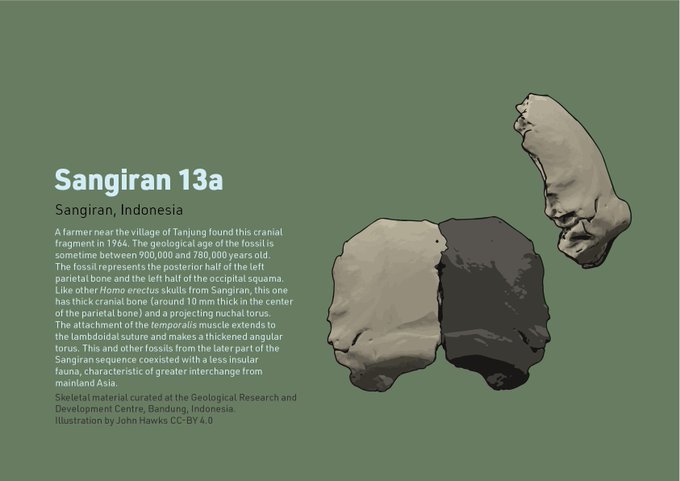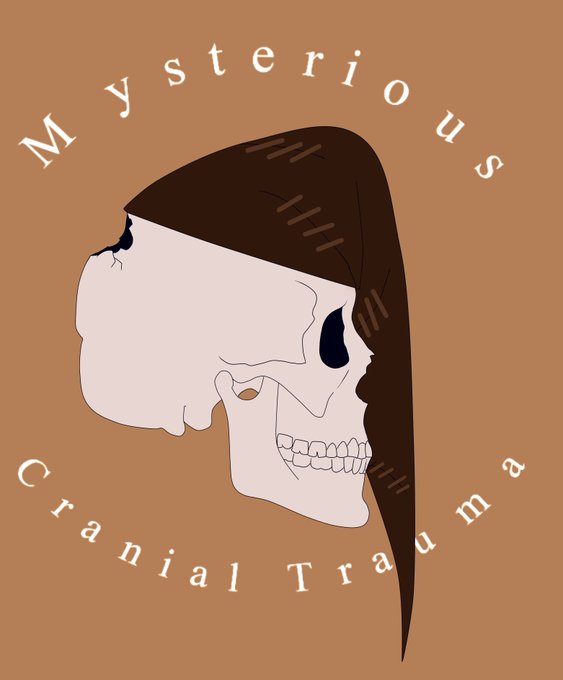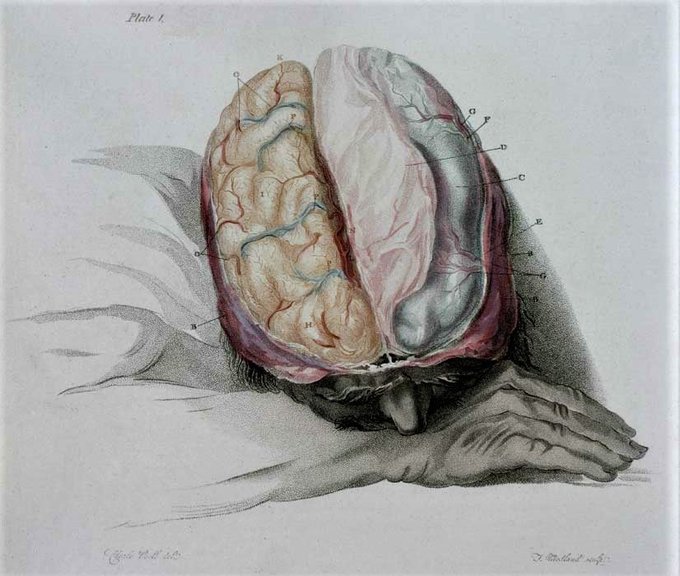cranialのTwitterイラスト検索結果。 249 件中 6ページ目
We comment on cranial scute homology of stem turtles. Whereas shell scutes are relatively well understood & intensely used for phylogeny, cranial scutes are more problematic. This work expands pioneering work of others, particularly Juliana Sterli (@yatachelys) 2/3
Skull 3 from Dmanisi is one of the most complete cranial remains attributed to Homo erectus. This #hominin individual represents a stage of development just before adulthood, with third molars just beginning to erupt. #paleoanthropology
Recent work by Yolanda Fernández-Jalvo and Peter Andrews found that cranial fractures on the Spy 1 Neandertal skull were the likely cause of death of this #hominin individual. A new dating scheme places the Spy Neandertals between 44,300 and 40,700 years ago. #paleoanthropology
Even small fragments of Homo erectus skulls are often very recognizable, due to their thick cranial bone and prominent, thickened entheses. This #hominin skull fragment existed at a time of faunal interchange between Java and mainland Asia. #paleoanthropology
Mmm yes I still love this idea and how this is turning out. Might call this fusion Cranial Shockwave.
But another fossil that associates a mandible and cranial material is OH 13, and that also shows a number of dental and mandibular similarities with KNM-ER 992, as Bernard Wood has repeatedly emphasized. In those ways, OH 13 is actually different from OH 7, the habilis holotype.
The "Ardi" skeleton from Aramis, Ethiopia, provides the most complete cranial, dental, and postcranial evidence of any hominoid from the Early Pliocene. Some of its features point to a relationship with later #hominin remains. #paleoanthropology
Our article with @Val_Fisch on the postcranial skeleton of Cerrejonisuchus (Dyrosauridae) has been published today in @thePeerJ !
To celebrate, here is a personal reconstruction of the beast🐊
https://t.co/iGPFqZVoVs
#EvolutionaryStudies #Paleontology #Taxonomy #Dyrosauridae
Arthritis in the jaw of a pliosaur? Evidence of degenerative condition in fossil remains of marine reptile from the Jurassic.
Sassoon et al 2012 Palaeontology: Cranial anatomy, taxonomic implications and #palaeopathology of an Upper Jurassic pliosaur
https://t.co/7lP3zsiNBS
Check out this amazing model of the cranial nerves and foramina, by MSc Medical Artist Sophia Lappe: https://t.co/k2l5KvBIXi #anatomy #anatomyeducation #SciArt #scicomm #3dmodeling @Sketchfab @UoDCAHID
For #FossilFriday, here's an open access article on cranial anatomy of Saurornitholestes langstoni from Dinosaur Park Formation by Phillip Currie and David C. Evans:
https://t.co/S9v33hWXvF
#paleontology #fossils #dinosaurs #Cretaceous #dromaeosauridae
Sangiran 2 is the earliest #hominin fossil with endocranial hyperostosis, an abnormal growth of bone on the internal skull surface. This is relatively common today in women over age 65, but very rare in men. The causes of the condition remain unclear. #paleoanthropology
Great to see this out!
Darlim and colleagues describe in details the 3D cranial anatomy of a new species of baurusuchid from the Cretaceous of Brazil. https://t.co/sgf58bvnhE
Mysterious Cranial Trauma, Copyright to @jimaxyn and @VagabondChron .
Let's celebrate yet another Monday with the #DinosaurOfTheWeek post!
Today's DotW is.. Parasaurolophus!
Their cranial crest is actually hollow inside! Working similarly to a tube, the said crest amplified the voice of Parasaurolophus, allowing them to make impressive honks!
The Dmanisi site has some of the most informative postcranial remains of Homo erectus, telling us about the body size and locomotion of this #hominin species. D4167 comes from an individual of around 155 cm in stature. #paleoanthropology
Some skulls of Homo erectus have exceptionally thick cranial bones. This #hominin individual from Sangiran, Indonesia, has a thickened bar of bone on the back, known as the nuchal torus, defining the area above the trapezius muscle. #paleoanthropology
Today marks the start of #BrainAwarenessWeek - these stunning illustrations by 19thc surgeon, neurologist & artist Charles Bell are from Anatomy of the Brain (1802). Bell is perhaps best known for describing the effects of paralysis on the 7th cranial nerve 'Bell's Palsy'






































